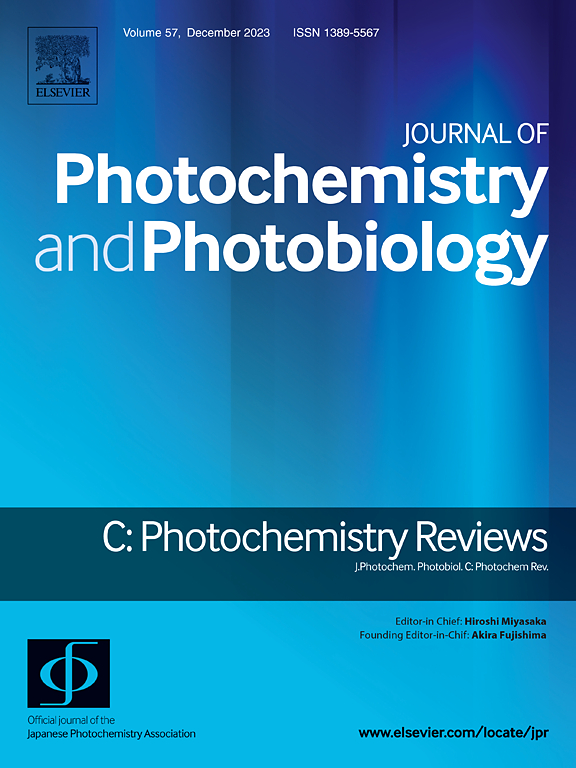Recent advances in the molecular designs of near ultraviolet emitters for efficient organic light emitting diodes
IF 13.1
1区 化学
Q1 CHEMISTRY, PHYSICAL
Journal of Photochemistry and Photobiology C: Photochemistry Reviews
Pub Date : 2025-04-23
DOI:10.1016/j.jphotochemrev.2025.100698
引用次数: 0
Abstract
The exploration of pure organic violet emitters (λem < 420 nm) has garnered significant attention within the scientific community due to their widespread applications in various research domains, including organic light-emitting diodes (OLEDs), biomedical applications, and photolithography, etc. Despite the availability of several near-ultraviolet (NUV) sources, organic emitters have stood out due to their cost-effectiveness, flexibility, and extensive potential for functional tunability. However, the development of highly efficient NUV emitters for OLEDs faces substantial challenges and lags behind their red, green and blue counterparts, primarily due to stringent molecular requirements. Over the past decade, substantial efforts have been dedicated to devising new molecular designs aimed at striking a balance between conjugation length, donor-acceptor interactions, photoluminescence quantum yield, charge transporting properties, and color purity of violet emitters. However, a limited number of reviews were reported on different design strategies for producing violet (< 420 nm) emitters to date. Addressing this gap, this review provides an overview of recent design advances in constructing violet emitters. It delves into their structure-function relationship focusing on photophysical properties and OLED performance. Further, the current status and future prospectus of violet organic emitters are presented.
高效有机发光二极管近紫外发射体分子设计的最新进展
纯有机紫色发射体(λem <;420 nm)由于其广泛应用于各种研究领域,包括有机发光二极管(oled),生物医学应用和光刻等,在科学界引起了极大的关注。尽管有几种近紫外(NUV)光源,但有机发射器因其成本效益、灵活性和广泛的功能可调节性潜力而脱颖而出。然而,由于严格的分子要求,开发用于oled的高效NUV发射器面临着巨大的挑战,并且落后于红、绿、蓝对应体。在过去的十年中,大量的努力致力于设计新的分子设计,旨在达到共轭长度,施主-受体相互作用,光致发光量子产率,电荷输运性质和紫色发射器的颜色纯度之间的平衡。然而,关于生产紫罗兰色(<;420 nm)发射器。为了解决这一差距,本文综述了构建紫色发射器的最新设计进展。它深入研究了它们的结构-功能关系,重点是光物理性质和OLED性能。此外,还介绍了紫色有机发光材料的研究现状和发展前景。
本文章由计算机程序翻译,如有差异,请以英文原文为准。
求助全文
约1分钟内获得全文
求助全文
来源期刊
CiteScore
21.90
自引率
0.70%
发文量
36
审稿时长
47 days
期刊介绍:
The Journal of Photochemistry and Photobiology C: Photochemistry Reviews, published by Elsevier, is the official journal of the Japanese Photochemistry Association. It serves as a platform for scientists across various fields of photochemistry to communicate and collaborate, aiming to foster new interdisciplinary research areas. The journal covers a wide scope, including fundamental molecular photochemistry, organic and inorganic photochemistry, photoelectrochemistry, photocatalysis, solar energy conversion, photobiology, and more. It provides a forum for discussing advancements and promoting collaboration in the field of photochemistry.

 求助内容:
求助内容: 应助结果提醒方式:
应助结果提醒方式:


